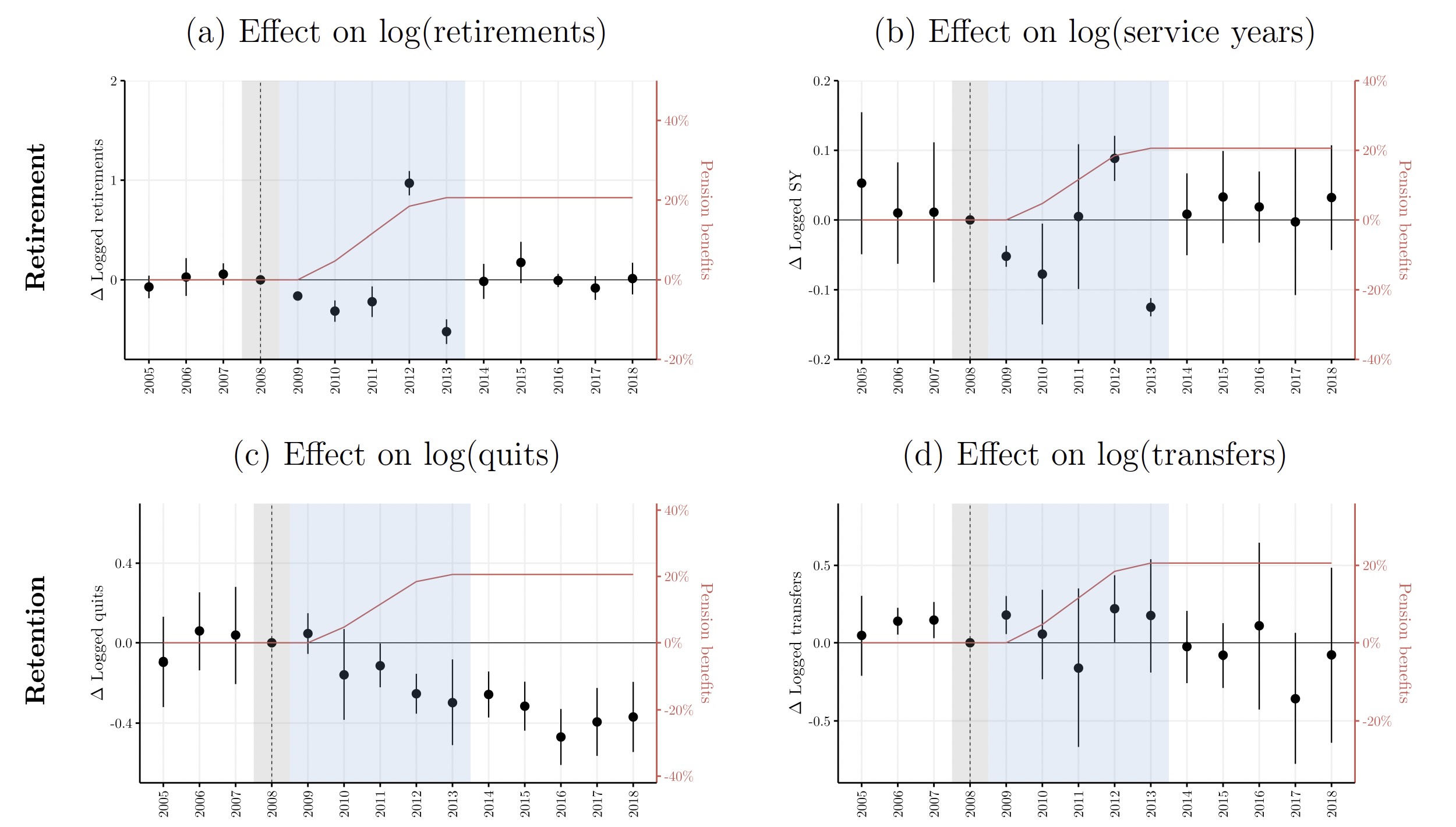Research
Retirement, Retention, Recruitment: Evidence from a Federal Pension Policy
Revise and Resubmit, Labour Economics
Click to view abstract
I exploit a policy change for U.S. federal workers’ pension benefits to estimate the effect of pension generosity on worker retirement, retention, and recruitment. The policy increased pensions by 16-25%. I find there is a 30.3% decrease in job quits for permanent workers. However, there is little evidence that pension generosity has an effect on new hires. This suggests salience may play a role in how workers value pensions. Additionally, I find a large heterogeneous labor supply response to pension generosity. Altogether, this shows that pension generosity is effective in retaining workers and may have important implications for workforce planning.

Rehabilitating Delinquent Digital Borrowers
(with Alfredo Burlando, Silvia Prina, and Michael Kuhn)
Under Review
Disability-Based Affirmative Action: How Federal Agencies Satisfied Federal Mandates
(with Glen Waddell)
Selection Into Motorcycling: What Can Licensing Laws Tell Us?
(with Glen Waddell)
Media
News
Disparaging dismissals aside, Alaska’s fired federal workers file for unemployment
At least 138 fired federal employees have applied for unemployment insurance in Alaska
Expert Testimony
Economic Contributions of Federal Civilian Workers in Alaska
Podcasts
Brock Wilson, PhD: Labor Economist at UAA’s Institute of Social & Economic Research (ISER)
